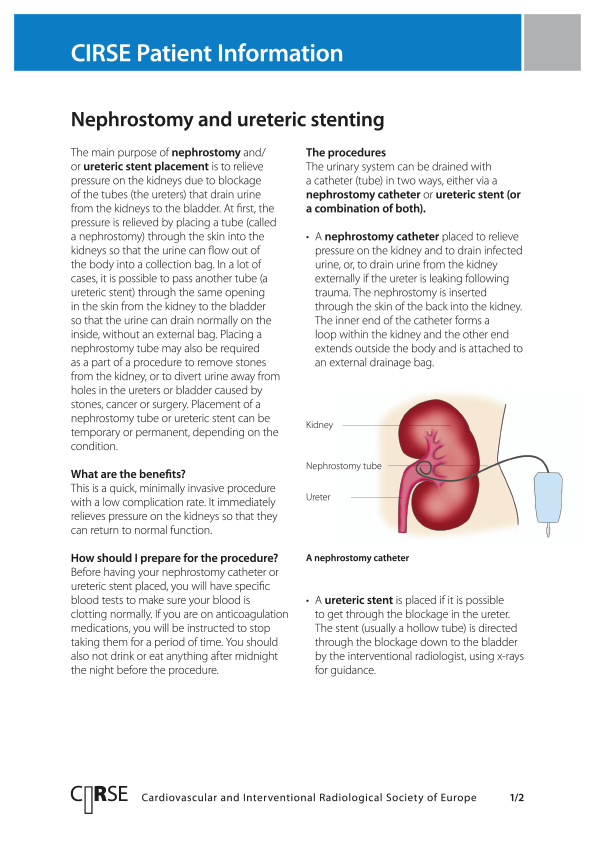Symptoms
In cases of obstructive uropathy, you may experience back pain under your ribs, repeated infections (usually with fever and shivers), and blood in your urine. If your kidneys have stopped working (acute kidney failure), you may feel nauseous.
Diagnosis
In cases of abnormal blood creatinine values and signs and symptoms of obstructive uropathy, an ultrasound examination is the first diagnostic test which is performed in the great majority of cases. If the ultrasound examination cannot identify the cause of the obstruction in your bladder or kidneys, your doctor may also use CT (or CAT) scan to diagnose you. If a tumour is detected, MRI and PET scans can play a role in diagnosis and in determination of the extent of the tumour.
Treatment
The treatment you will receive depends on the cause of the obstructive uropathy. If the blockage is severe and the health of your kidney is threatened, the blockage will be drained through the skin by a tube inserted into your ureter (this procedure is called nephrostomy) or an internal tube (double J stent).
Sometimes the blockage can be relieved through the urethra and bladder (cystoscopy). Stones can be removed through the skin, through the bladder and by open surgery. If you have a tumour, you may need surgery or radiation to remove the blockage.

